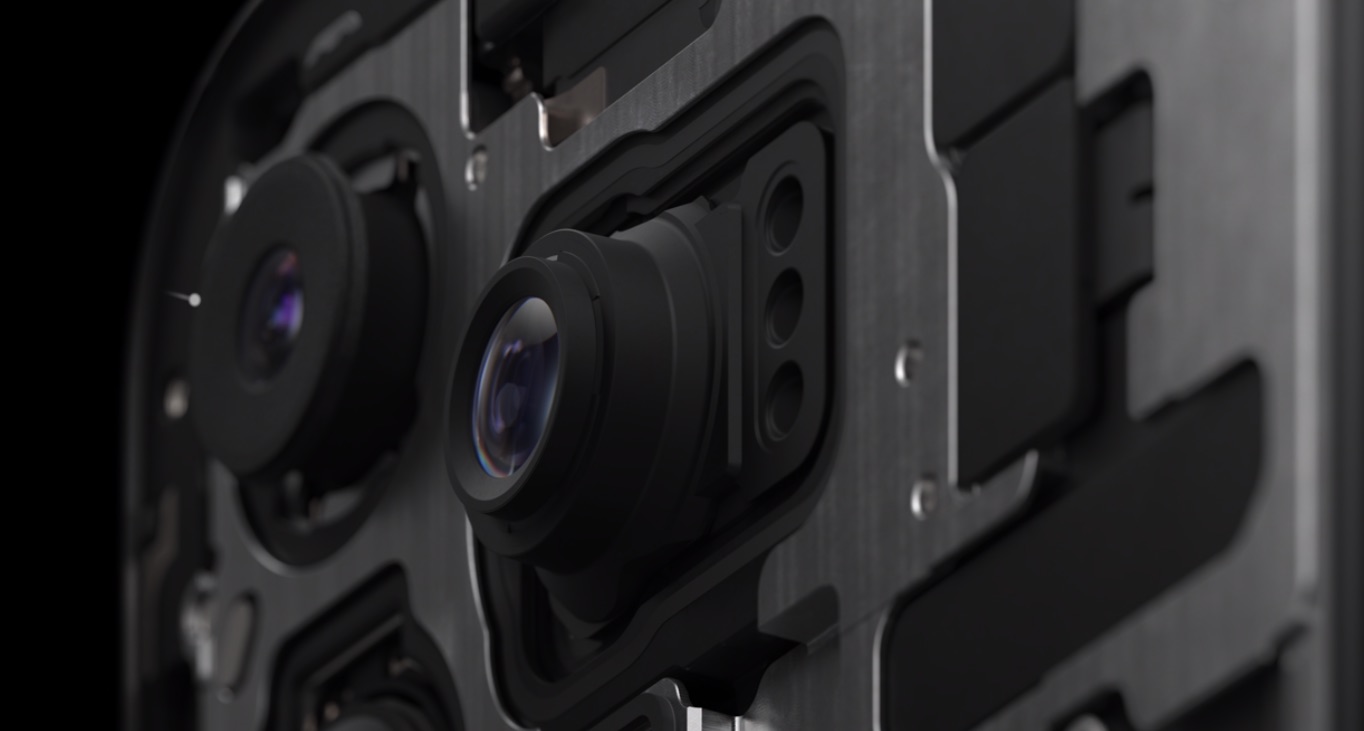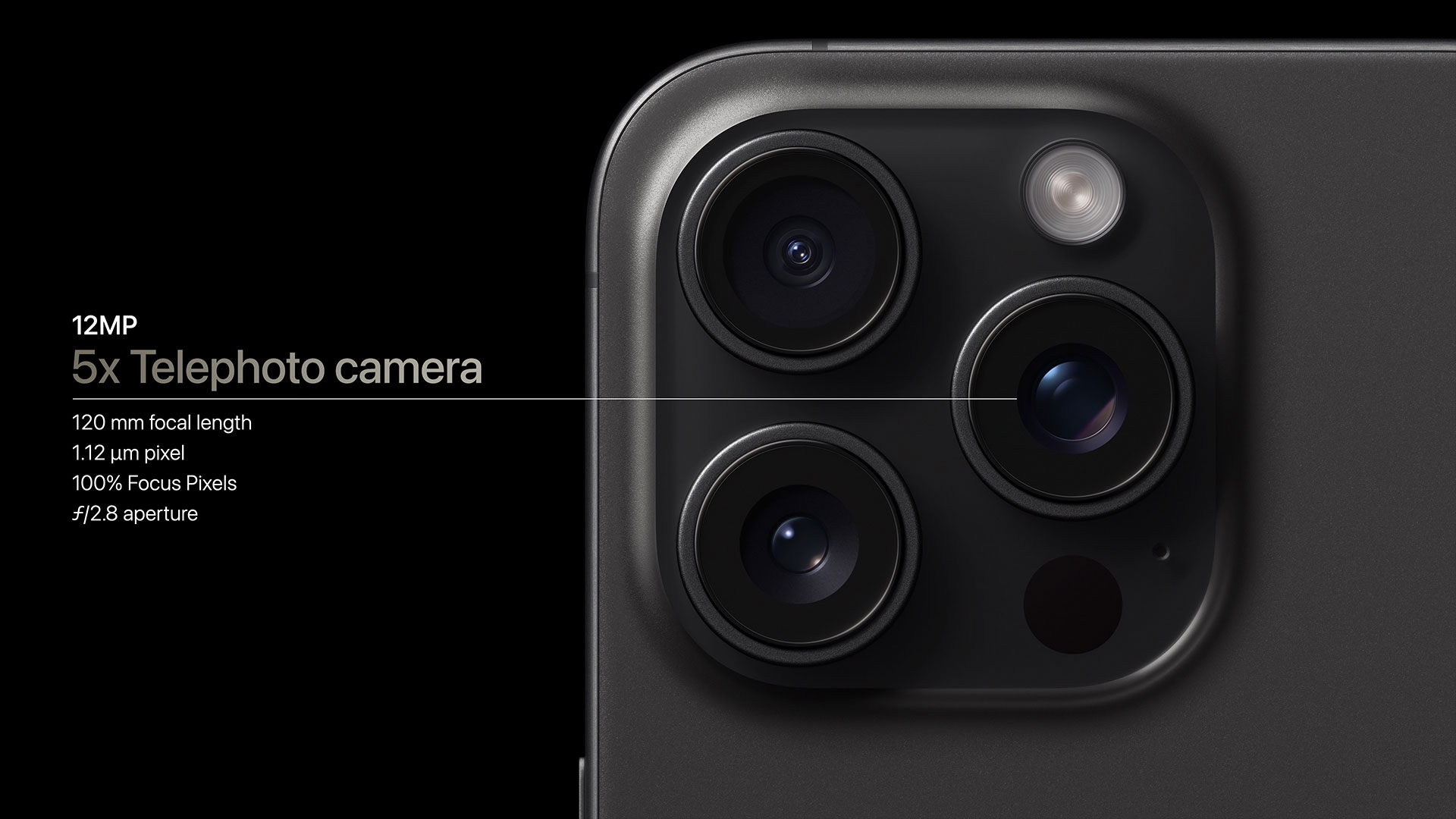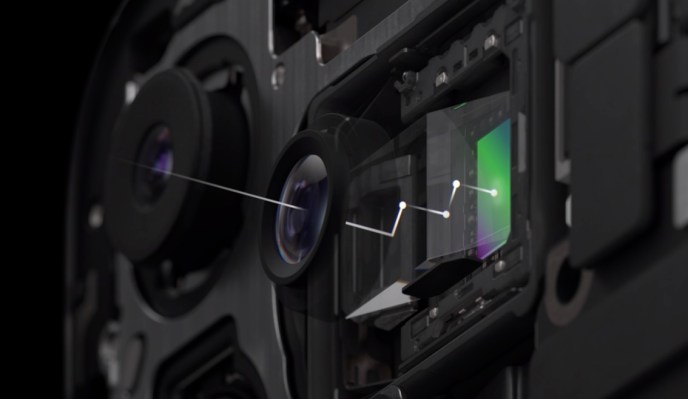At Apple’s event today, the phone maker showed off its new iPhone 15 Pro Max, with its flagship camera capabilities. Sure, Pixel owners might giggle to themselves, muttering something about how they’ve had 5x telephoto lenses for a while, but photography aficionados will be celebrating the introduction of a 120 mm-equivalent lens. Despite Apple’s claims in the keynote, I doubt that the long-range peeper will cut it for sports or wildlife photography, but it’s an extremely usable focal length for portraiture and gets you just that tiny bit closer to the action.
The camera on the iPhone 14 Pro Max was already excellent, but the newest generation flagship is going far beyond: This titanium-clad pocket warrior packs a 25% larger sensor, a f/2.8 aperture and, of course, the aforementioned 5x telephoto lens. The non-Max version of iPhone 15 Pro gets a 77 mm lens — not bad, but a significant downgrade for the photographically inclined among us, compared to its bigger brother.

The telephoto camera on iPhone 15 Pro Max. Image Credit: Apple
Focal length is a tricky one for cell phones because you can’t get away from the laws of physics. Let’s get nerdy: Focal length, expressed in millimeters (mm), refers to the distance between the lens’s optical center (or the nodal point) and the image sensor when the lens is focused at infinity. Contrary to common belief, it’s not the physical length of the lens but a measure of how strongly the lens converges (or diverges) light. You can bend light extremely efficiently, but the different wavelengths of light (blue is a slightly different wavelength than red), get focused slightly differently based on the refractive index of the lenses. In other words: It’d be easy to make a smaller black and white telephoto lens, but people love color, so what are you gonna do.
Catch up on all of our Apple Event 2023 coverage here.
Still with me? The only thing you really need to understand is this: Telephoto lenses take up space, and that’s the one thing phones don’t have in abundance. So, what is a poor camera designer to do? Apple came up with an elegant solution in the form of a tetra-prism: To get enough distance between the nodal point and infinity, they bounce the light around four times inside the lens, giving the light a longer travel distance, in a much smaller design than what would otherwise be possible.
They’ve paired the clever light design with a three-dimensional optical image stabilization sensor shift module to keep the sensor steady. Again, longer focal lengths are far more susceptible to camera shake, an effect that gets harder to counteract in software, especially in lower light and with longer exposures.

Hello tri-clops. Pleased to meet you. Image credit: Apple
The three lenses on the iPhone 15 Pro Max let users shoot at 24, 28, and 35 mm equivalents, and they do some fun digital trickery to make other focal lengths available from the wider cameras. This is in addition to a new nanoscale coating to reduce lens flare and some computational photography wizardry that enables a new series of portrait modes and the ability to use the two wide-angle cameras in parallel to shoot 3D “spatial videos” that can then be turned into video and images with depth perception for Apple’s VR headset.
The image capturing is further enhanced by using the lidar scanner built into the phone for low-light capture.
The final party trick Apple squeezed into the new camera is a somewhat niche use case: Using an optional USB-C 3.0 cable, you can use your iPhone with Capture One to shoot and instantly transfer 48 megapixel pro raw directly to a Mac, or you can record Pro Res 4k video at up to 60 frames per second directly to an external storage drive. Technologically, that’s an impressive thing for a phone to be able to do. But as a camera nerd, hear me out here: Anyone who understands what all of that means will probably have the same reaction as I did: Why wouldn’t you just use a camera with a proper-sized image sensor? As great as the cameras in the iPhone 15 Pro Max no doubt are, you still can’t escape the fact that larger sensors with more substantial lenses in front of them will deliver substantially better still and video images. But, you know, if you want to, you can, I guess?
What cannot be denied is that, at least on paper, Apple has made another hop forward compared to even the very impressive cameras on the previous-generation cameras, and I, for one, can’t wait to get my grubby little mitts on one to give it a whirl.

